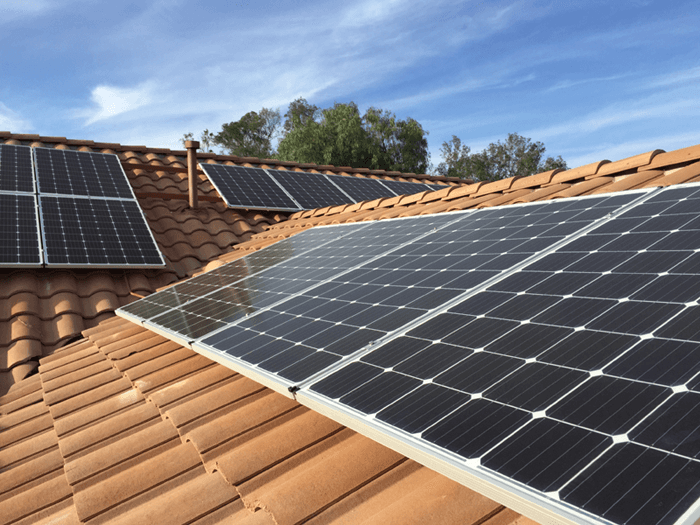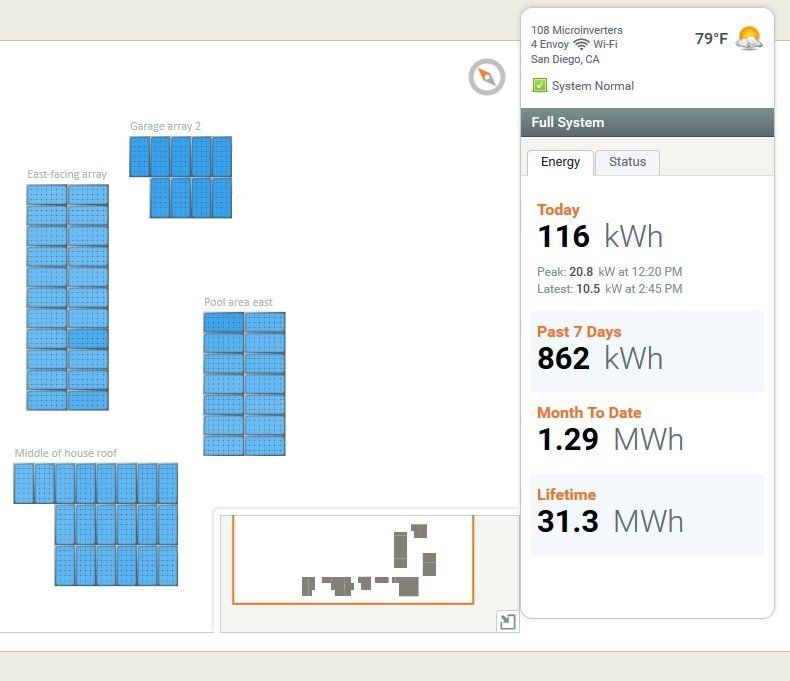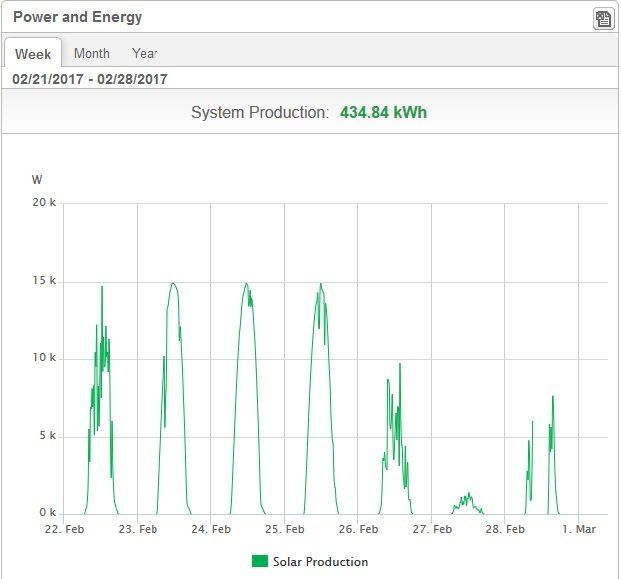What’s the Maximum Power Production of my Solar System on a Sunny Day?
What’s the Maximum Power Production of my Solar System on a Sunny Day?
One question we often receive from our customers here at Cosmic Solar relates to solar system size and what the maximum wattage, or production, of a particular solar system on any given day. Of course, the answer to this question can vary widely for every customer based on a whole basket of factors, such as orientation of the solar panels, time of year, shading, temperature, wire lengths, solar panel soiling, inverter type and other factors, we can typically get a fairly good handle on how much power a solar system can produce during its maximum production, at least approximately… Which leads us into our question for today:
What’s the most my solar system can produce on a sunny day?
For starters, just so we’re using an “apples to apples” comparison when talking about solar system size metrics and production metrics — the total system size of a solar electrical system is referred to in direct current, or DC power. You can figure out what size your system is by multiplying the DC wattage of each panel by the number of solar panels you have on your roof or ground mount. So, for example, if you have 20 solar panels and each panel wattage is 300 watts, then your total system size is 6,000 watts or 6.0 kilowatts DC (20 panels x 300 watts). Most solar professionals refer to a system size in DC because it provides a basis for comparison and helps make an apples to apples comparison.
Now let’s talk about solar production from the sun.
When solar panels are exposed to sunlight, they produce a type of energy called “DC;” however, in most residential and commercial cases, in order to use this type of energy, we need to convert it to another type of energy called alternating current, or AC power. Unfortunately, when this process occurs, a portion of the energy that was produced is lost for various reasons. This typically referred to as “efficiency losses” and is the point at which some of the confusion comes into play since most solar systems are quoted in DC wattage but actually show AC wattage when viewing the production figures on a sunny day.
For example, if you have 20 solar panels on your roof that are each 300 watts a piece DC, you have a 6.0 kilowatt system on your roof; however, in most cases if you look at your solar monitoring system or look at your inverter to see how much energy you’re producing, you typically won’t see your solar production ever break the 5.2 kilowatt mark. So what gives? Is there something wrong with my system?
Of course not, but we always need to remember that the AC production leaving your inverter — after efficiency losses, taken into account when converting DC to AC — will almost always be lower than the total DC output of your system. There are many reasons for this (shoot, we could write a whole book about why this happens that would help put to you sleep every night), but, for simplicity’s sake, let’s just say that the process of converting DC to AC is roughly about 88% effective, which accounts for the differences in your total system size in DC and the maximum power your inverter can produce in AC. Make sense?
Ultimately, the most important thing to remember is that here at Cosmic Solar, we’re designing your system to produce a maximum number of kilowatt hours on an annual scale and don’t stress so much about what your system will produce on a nice sunny day in the fall or summer. But hey, we get it — you likely made a significant investment in your solar system and want to ensure that it’s producing the maximum amount of power to reduce your electric bill.
For all intents and purposes, the only time we really use DC figures to talk about our solar system is when we’re referring to system size and, since inverters track AC power production and not DC, we use AC values when we’re referring to how much electricity is produced at any given moment (also known as power) and over time (also known as energy).
So the next time your 6.0 kilowatt DC system isn’t producing 6.0 kilowatts of power on the inverter screen, make sure to remember that the figures you’re seeing are being reported after efficiency losses associated with the conversion of DC to AC and that it’s a perfectly normal thing to see lower production because of these reasons.
We sure hope this helped! The actual science behind this production phenomenon can be quite complex, so if you still have questions or would like to know more about your solar system production, please feel free to contact the experts here at Cosmic Solar and we’d be happy to help.
Here’s to more sunny days!





